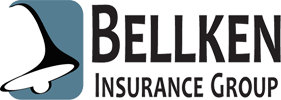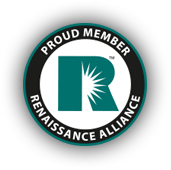Insurance Audit Checklist for Florida-Based Contractors and Construction Firms
See How We're Different
or call us: 954-233-0733
In the dynamic world of construction, particularly in Florida, ensuring that your business is adequately protected through insurance is paramount. An insurance audit serves as a critical examination of your coverage, helping to identify gaps and ensure compliance with state regulations. This checklist will guide Florida-based contractors and construction firms through the essential components of an insurance audit, ensuring that all bases are covered.
Understanding the Importance of Insurance Audits
Insurance audits are not merely a bureaucratic formality; they are a vital part of risk management for contractors and construction firms. In Florida, where the construction industry is booming, the potential for accidents and liabilities is significant. Regular audits help businesses to mitigate risks, maintain compliance, and ultimately save money.
Risk Management
By conducting an insurance audit, contractors can identify potential risks that may not be covered under their current policies. This proactive approach allows firms to address vulnerabilities before they lead to costly claims or legal issues. Understanding the specific risks associated with construction work, such as worker injuries or property damage, is essential for creating a robust insurance strategy. Furthermore, audits can uncover hidden risks related to subcontractors or specialized equipment, which are often overlooked but can have serious implications if not properly insured.
Compliance with State Regulations
Florida has specific laws and regulations governing construction and contractor insurance. An audit helps ensure that your business complies with these requirements, avoiding penalties or legal troubles. By keeping abreast of changes in legislation, contractors can adjust their insurance policies accordingly, ensuring they are always in line with state mandates. Additionally, compliance not only protects businesses from fines but can also enhance their reputation in the industry, as clients often prefer to work with contractors who demonstrate a commitment to legal and ethical standards.
Financial Benefits
Insurance audits can lead to financial savings in several ways. By identifying areas where coverage may be excessive or unnecessary, contractors can adjust their policies to reduce premiums. Additionally, a well-structured insurance plan can prevent costly claims, ultimately leading to lower insurance costs over time. Moreover, many insurance providers offer discounts for businesses that can demonstrate a proactive approach to risk management through regular audits. This means that not only can contractors save money by refining their coverage, but they may also benefit from lower rates as a reward for their diligence in maintaining a safe and compliant operation.
Enhancing Operational Efficiency
Beyond financial implications, insurance audits can significantly enhance operational efficiency within a construction firm. By identifying gaps in coverage and streamlining insurance processes, contractors can allocate resources more effectively. This means that time and effort spent on managing insurance claims can be reduced, allowing teams to focus on their core construction activities. Furthermore, a clear understanding of insurance policies and coverage can empower project managers to make informed decisions, ensuring that all aspects of a project are adequately protected and reducing the likelihood of disruptions caused by insurance-related issues.
Building Stronger Relationships with Insurers
Regular insurance audits can also foster stronger relationships between contractors and their insurance providers. By demonstrating a commitment to risk management and compliance, contractors can build trust with insurers, which may lead to more favorable terms and conditions in future policy negotiations. Insurers are more likely to offer tailored solutions and support to clients who actively engage in the audit process, recognizing their dedication to maintaining a safe and compliant work environment. This collaborative approach can be beneficial in times of need, as contractors may find themselves receiving quicker responses and better support during claims processes, ultimately enhancing their overall experience with the insurance market.
Key Components of an Insurance Audit
When preparing for an insurance audit, contractors should focus on several key components. Each aspect plays a crucial role in ensuring comprehensive coverage and compliance with state regulations.
Review of Current Policies
The first step in any insurance audit is to review existing policies. This includes general liability, workers' compensation, and any specialized coverage relevant to construction activities. Contractors should ensure that their policies are up-to-date and reflect the current scope of work.
It’s also essential to verify that coverage limits are adequate. For instance, general liability limits should be sufficient to cover potential claims arising from construction activities, which can be substantial. If the limits are too low, businesses may find themselves exposed to significant financial risks.
Moreover, contractors should consider any recent changes in regulations that might affect their coverage needs. For example, new safety standards or environmental regulations could necessitate updates to existing policies. Engaging with an insurance broker who specializes in construction can provide valuable insights into the latest industry trends and help ensure that contractors are not only compliant but also adequately protected against emerging risks.
Documentation of Claims History
Analyzing the claims history is another critical aspect of the audit. This includes reviewing past claims made by the business and understanding the reasons behind them. A high frequency of claims may indicate underlying issues that need to be addressed, such as safety practices or employee training.
Additionally, understanding the nature of past claims can help contractors identify trends and adjust their risk management strategies accordingly. This proactive approach can lead to improved safety measures and reduced insurance costs in the long run.
Furthermore, documenting claims history not only aids in internal assessments but also serves as a crucial tool during negotiations with insurance providers. A well-documented claims history can demonstrate a contractor's commitment to safety and risk management, potentially leading to lower premiums or more favorable terms in future policy renewals.
Assessment of Risk Exposure
Contractors should conduct a thorough assessment of their risk exposure. This involves identifying all potential risks associated with their operations, including those related to subcontractors, equipment, and materials. By understanding these risks, businesses can tailor their insurance coverage to address specific vulnerabilities.
For instance, if a contractor frequently works on large-scale projects, they may need higher coverage limits for equipment and liability. On the other hand, firms that primarily handle smaller projects may require less extensive coverage. This assessment should be revisited regularly to account for changes in project size, scope, and complexity.
In addition to evaluating physical risks, contractors should also consider the impact of technological advancements on their operations. The increasing use of drones for site inspections or the implementation of project management software can introduce new risks and liabilities. By staying ahead of these changes, contractors can ensure that their insurance policies evolve in tandem with their business practices, providing a robust safety net against unforeseen challenges.
Essential Coverage Types for Contractors
Florida-based contractors must ensure they have the right types of insurance coverage to protect their business. The following are essential coverage types that should be included in any comprehensive insurance audit.
General Liability Insurance
General liability insurance is crucial for contractors, as it protects against claims of bodily injury, property damage, and personal injury. This coverage is essential for safeguarding the business against lawsuits that may arise from construction activities.
In Florida, where construction projects often involve multiple parties, having adequate general liability coverage can prevent significant financial losses. Contractors should regularly review their policy limits to ensure they are sufficient for the scale of their operations. Additionally, it's wise to consider endorsements that can enhance coverage, such as products-completed operations coverage, which provides protection after a project is finished, safeguarding against claims that may arise from defects or issues that surface later.
Workers' Compensation Insurance
Workers' compensation insurance is mandatory for most Florida contractors. This coverage provides benefits to employees who are injured on the job, covering medical expenses and lost wages. It also protects employers from lawsuits related to workplace injuries.
During an insurance audit, contractors should verify that their workers' compensation policy meets state requirements and adequately covers all employees, including subcontractors. Additionally, reviewing the claims history related to workers' compensation can help identify areas for improvement in workplace safety. Implementing safety training programs and regular safety audits can not only reduce the risk of injuries but may also lead to lower premiums over time, as insurers often reward businesses that actively work to minimize risks.
Commercial Auto Insurance
For contractors who use vehicles for business purposes, commercial auto insurance is essential. This coverage protects against liabilities arising from vehicle accidents, including damage to other vehicles and injuries to third parties.
Contractors should ensure that their commercial auto insurance policy covers all vehicles used for business, including trucks and vans. Regularly reviewing the policy can help identify any gaps in coverage, especially if the fleet size or usage changes over time. Furthermore, contractors should consider adding coverage for equipment and tools transported in these vehicles, as well as uninsured motorist coverage, which can provide additional protection in the event of an accident with an underinsured driver. Keeping accurate records of vehicle usage and maintenance can also play a crucial role in managing insurance costs and ensuring compliance with policy requirements.
Additional Coverage Options
In addition to the essential coverage types, contractors may want to consider additional insurance options to further protect their business. These options can provide added security and peace of mind in an industry fraught with risks. As the construction landscape evolves, so too do the challenges contractors face, making it imperative to stay informed about the various insurance products available.
Professional Liability Insurance
Professional liability insurance, also known as errors and omissions insurance, is particularly important for contractors who provide design or consulting services. This coverage protects against claims of negligence, errors, or omissions in the professional services provided. In a field where the stakes are high, even a minor oversight can lead to significant financial repercussions.
In the event of a dispute with a client regarding the quality of work or project management, professional liability insurance can help cover legal fees and settlements. Contractors should assess whether this coverage is necessary based on the services they offer and the potential risks involved. Additionally, maintaining clear communication with clients and documenting all project details can further mitigate the risk of claims, but having this insurance in place serves as a crucial safety net.
Equipment and Tool Insurance
Construction equipment and tools represent a significant investment for contractors. Equipment and tool insurance provides coverage for loss or damage to these assets, whether due to theft, vandalism, or accidents. With the increasing prevalence of job site theft, this type of insurance has become more vital than ever, as contractors face the potential for substantial financial loss if their tools are stolen or damaged.
During an insurance audit, contractors should evaluate the value of their equipment and tools to ensure they have adequate coverage. This type of insurance can be particularly beneficial for contractors who frequently work on multiple job sites, as it protects against the risks associated with transporting equipment. Furthermore, investing in high-quality locks and security systems can complement this insurance, providing an additional layer of protection for valuable assets.
Builder's Risk Insurance
Builder's risk insurance is a specialized coverage designed for construction projects. It protects against damage to buildings under construction, including losses due to fire, theft, or vandalism. This coverage is typically purchased for the duration of the project and can be essential for contractors working on large-scale developments. Understanding the specific terms and conditions of builder's risk insurance is crucial, as coverage can vary significantly between policies.
Contractors should assess the need for builder's risk insurance based on the size and complexity of their projects. Ensuring that this coverage is in place can prevent significant financial losses if unforeseen events occur during construction. Additionally, contractors may want to consider including coverage for soft costs, such as lost income or additional expenses incurred due to project delays, which can arise from incidents covered by builder's risk insurance. This comprehensive approach to risk management can help safeguard a contractor's financial stability throughout the project lifecycle.
Preparing for the Audit Process
Preparing for an insurance audit requires careful planning and organization. Contractors should take several steps to ensure a smooth and efficient audit process.
Gathering Documentation
One of the first steps in preparing for an insurance audit is gathering all relevant documentation. This includes current insurance policies, claims history, financial records, and any safety protocols in place. Having this information readily available can expedite the audit process and provide a comprehensive overview of the business's insurance needs.
Additionally, contractors should compile records of employee training, safety inspections, and any certifications related to their work. This documentation can demonstrate a commitment to safety and risk management, which may positively influence insurance premiums.
Engaging with Insurance Professionals
Working with insurance professionals, such as brokers or agents, can provide valuable insights during the audit process. These experts can help contractors understand their coverage options, identify potential gaps, and recommend adjustments based on industry trends.
Engaging with insurance professionals early in the audit process can also facilitate a more thorough review of policies and ensure that all necessary documentation is in order. Their expertise can help contractors navigate the complexities of insurance and make informed decisions about their coverage.
Conducting Internal Assessments
Before the audit, contractors should conduct internal assessments of their operations and risk management practices. This includes reviewing safety protocols, employee training programs, and overall compliance with industry regulations.
Identifying areas for improvement can help contractors make necessary adjustments before the audit, ensuring they present a comprehensive and accurate picture of their insurance needs. This proactive approach can lead to better outcomes during the audit process.
Post-Audit Actions
After the insurance audit is complete, contractors should take specific actions to address any findings and improve their insurance coverage.
Implementing Recommendations
Based on the audit findings, contractors should implement any recommended changes to their insurance policies. This may involve adjusting coverage limits, adding additional coverage types, or modifying existing policies to better align with the business's needs.
Taking prompt action on these recommendations can help ensure that the business is adequately protected against potential risks. Regularly revisiting and updating policies is essential for maintaining comprehensive coverage.
Enhancing Risk Management Practices
In addition to adjusting insurance coverage, contractors should use the audit findings to enhance their risk management practices. This may involve implementing new safety protocols, improving employee training programs, or investing in safety equipment.
By prioritizing risk management, contractors can reduce the likelihood of claims and improve overall safety on job sites. This proactive approach not only protects the business but also fosters a culture of safety among employees.
Regular Review and Reassessment
Insurance audits should not be a one-time event. Contractors should schedule regular reviews of their insurance policies and risk management practices to ensure they remain compliant and adequately protected. This ongoing process allows businesses to adapt to changes in the industry, project scope, and regulatory requirements.
Establishing a routine for insurance audits can help contractors stay ahead of potential risks and ensure that their coverage evolves with their business. This proactive approach to insurance management is essential for long-term success in the construction industry.
Conclusion
For Florida-based contractors and construction firms, conducting regular insurance audits is a critical component of effective risk management. By following this checklist, businesses can ensure they have the appropriate coverage to protect against potential liabilities and comply with state regulations.
From understanding the importance of insurance audits to preparing for the audit process and taking post-audit actions, contractors can navigate the complexities of insurance with confidence. By prioritizing comprehensive coverage and proactive risk management, construction firms can safeguard their operations and achieve long-term success in Florida's thriving construction industry.








